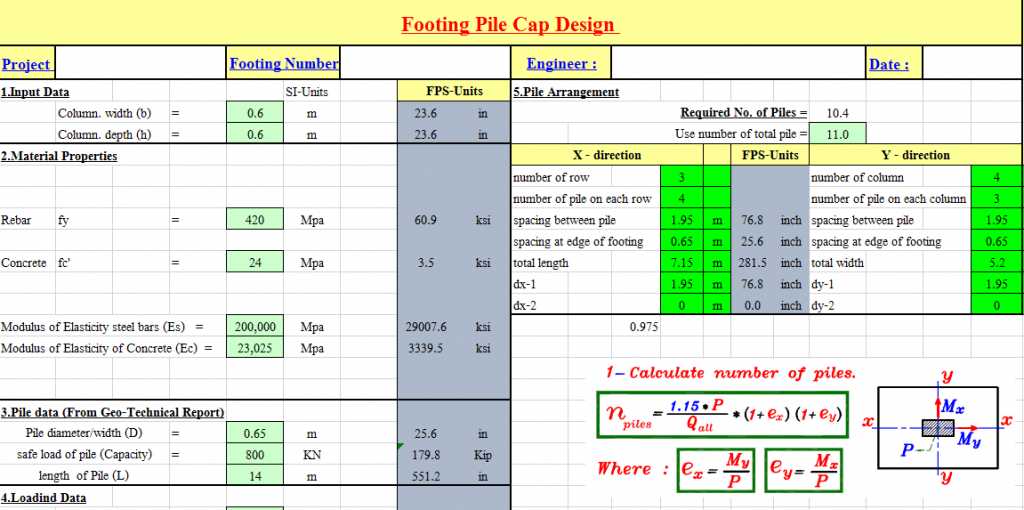

Gives an introduction to pile foundations. Understand these classifications using materials extracted from several sources, this chapter The objective of this unit is that in order to help the undergraduate student Objectives: Texts dealing with geotechnical and ground engineering techniques classify piles inĪ number of ways. įigure: 3D Model – Pile Cap Settlements and Pile Moment Diagrams. įigure: Pile Cap – Moments Shading (X-Direction). We can also select to display the 3D Model View of our pile cap with all installed piles, where we can also display the calculated graphs and shadings.įigure: Pile Moment Diagrams – X-Axis (Middle Pile Row)įigure: Pile Displacement Diagrams (Edge Pile Row).
Pile cap foundation software software#
The software displays the calculated graphs and shadings in detail on the model area. After the analysis is succeeded, we can review several calculated results on the model area, both on the side view, and on the pile cap top view. Since the model is ready, we can choose to calculate the design section.

Pile Group and Pile Cap Analysis and Results The following figures present the piles layout (pile center local x and y coordinates) and the generated model (2D section – side view) respectively.įigure: Pile Locations - Local X and Y Coordinates.įigure: Generated Model - 2D Section Side View - Middle Cut Section. In this case, 17 helical piles (PP4.5x0.337 with 3 helixes) have been distributed to the pile cap.

Through user-friendly dialogs we can define several parameters like the pile cap shape, the pile positions and direction and the external load magnitude and position on the pile cap. In this case, we will design a 3ft thick concrete circular pile cap (8ft Radius), supported by 17 helical piles. The pile cap can be created with the Pile Cap Wizard within our programs. Pile Cap Options and Pile Configuration in DeepFND/HelixPile By pressing “Edit” on this dialog, we can define the pile type and the pile structural section.įigure: Define pile dimensions and data dialog.įigure: Define pipe section and helix configurations.Ĭ. We have to double-click on the pile and define the pile parameters in the dialog that appears. The required pile length can also be calculated by the software. Later, based on the analyses results, we can choose to optimize the pile section and the pile embedment. In DeepFND we have to define the pile type, structural section (pipe section and helix configurations) and original depth.

This example was created using the Helical Pile component of the DeepFND software, but the exact same options should be followed to create the model in HelixPile. On the other hand, HelixPile includes only helical pile sections. The only difference is that DeepFND can do the lateral and vertical design of all pile types (helical and non-helical). They share the same user-friendly interactive interface, and they include the same analysis options. Our software programs DeepFND and HelixPile are identical. Slope Stability - Inclinometers Monitoringģ Plates (D=12, 14 and 16 in), Thickness: 0.5in


 0 kommentar(er)
0 kommentar(er)
